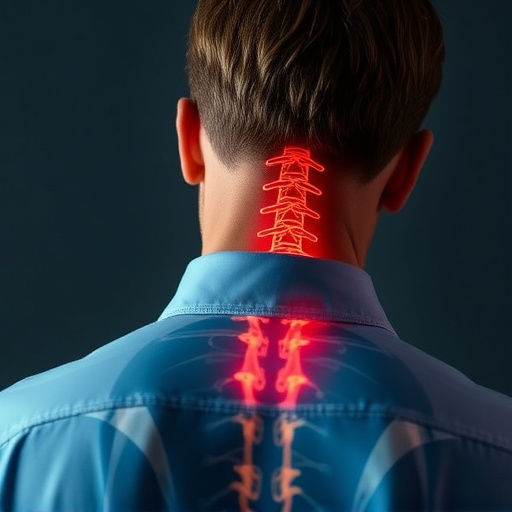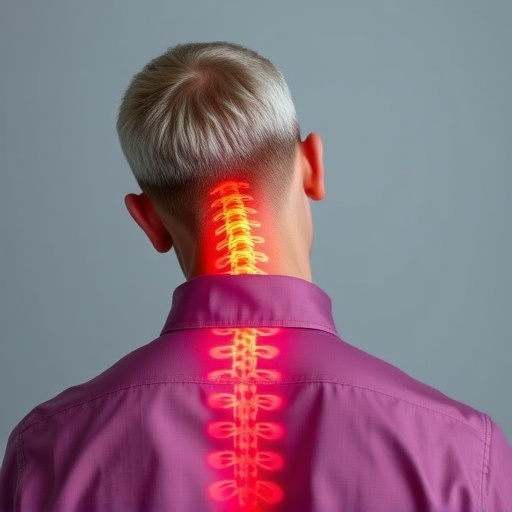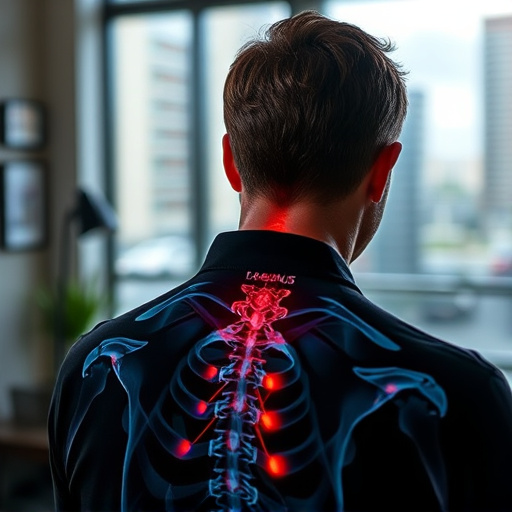Athletes and fitness enthusiasts suffering work-related injuries require specialized workers compensation injury care focused on tailored rehabilitation. This approach addresses unique needs, considering injury type, severity, and individual factors to restore function and enhance performance for a safe return to sport or fitness. Combining physical therapy, targeted exercises, advanced technologies, and progressive training methods facilitates faster healing, prevents future injuries, and ensures athletes can resume their preferred activities effectively.
Rehabilitation is a critical component in the journey of athletes and fitness enthusiasts towards recovery and return to peak performance. This comprehensive guide delves into the unique needs of these individuals, highlighting the pivotal role of workers’ compensation as a support system for sports-related injuries. We explore personalized rehabilitation plans, effective treatment strategies, and the significance of progressive training in expediting recovery. Furthermore, we discuss long-term care strategies to prevent recurrence and ensure sustained fitness.
- Understanding Athletes' Unique Rehabilitation Needs
- Workers Compensation and Its Role in Sports Injury Care
- Creating a Personalized Rehabilitation Plan
- Effective Treatment Strategies for Common Athletic Injuries
- The Importance of Progressive Training in Recovery
- Preventing Recurrence: Long-Term Care and Fitness Maintenance
Understanding Athletes' Unique Rehabilitation Needs

Athletes and fitness enthusiasts often face unique challenges when it comes to rehabilitation after an injury, especially those seeking Workers Compensation injury care. Their bodies are designed for performance and endurance, which means recovery requires a tailored approach that addresses specific needs. Unlike general exercise routines, athletic rehabilitation focuses on restoring function, improving strength, and enhancing flexibility in a way that supports the athlete’s return to their sport or fitness regimen.
Each injury is distinct, affecting muscles, joints, or connective tissues differently. Rehabilitation plans must consider the type and severity of the injury, as well as the individual’s overall health, age, and previous experiences. For instance, a Workers Compensation claim for a lower-body strain will differ from that of an athlete recovering from a high-impact sport-related fracture. Effective rehabilitation involves a combination of physical therapy, specialized exercises, and sometimes, advanced technologies to support faster and safer healing.
Workers Compensation and Its Role in Sports Injury Care

Workers compensation plays a significant role in providing specialized workers compensation injury care for athletes and fitness enthusiasts who suffer work-related injuries during their training or participation in sports events. This system is designed to offer financial protection, medical benefits, and rehabilitation services to workers who are injured on the job, ensuring they receive the necessary support to return to their careers.
For athletes, accessing workers compensation can be a game-changer, providing critical coverage for injuries sustained during practices or competitions. It covers various sports-related mishaps, from sprains and strains to more severe traumas, offering a safety net that facilitates proper medical treatment and a structured rehabilitation process. This care is essential in helping athletes regain their physical abilities and return to their chosen sport at the earliest opportunity.
Creating a Personalized Rehabilitation Plan

Creating a personalized rehabilitation plan is essential for athletes and fitness enthusiasts recovering from injuries, especially those covered by workers compensation insurance. Each individual’s path to recovery is unique, factoring in the specific injury, activity level, and overall health. A tailored program considers these elements, focusing on safe and progressive exercises that align with the patient’s goals, whether it’s returning to competitive sports or simply regaining daily mobility.
Rehabilitation specialists play a crucial role in designing these plans, evaluating the extent of the injury, identifying weak areas, and setting measurable milestones. This process involves a combination of physical therapy, targeted stretching, strength training, and education on injury prevention. The goal is not just to heal but to restore function, enhance performance, and minimize the risk of future injuries, ensuring athletes can safely resume their favored activities, including competitive sports or intense fitness routines.
Effective Treatment Strategies for Common Athletic Injuries

Rehabilitating athletic injuries is a specialized process that involves a multi-faceted approach to restore function and prevent future damage. For workers’ compensation injury care, it’s crucial to implement evidence-based treatment strategies tailored to the specific injury. One effective method is progressive resistance training, which gradually increases strength and flexibility, allowing athletes to regain mobility without exacerbating the injury. Additionally, modalities like physical therapy, massage, and ultrasound can alleviate pain, reduce inflammation, and promote healing.
Early intervention is key in managing common athletic injuries. For instance, RICE (Rest, Ice, Compression, Elevation) protocol can effectively manage acute injuries by reducing swelling and pain. Further specialized treatments, such as custom orthotics or bracing, address structural issues that contribute to recurring injuries. By combining these strategies, rehabilitation programs ensure athletes return to their sports safely and strengthen their bodies against future injuries, ultimately facilitating a swift and successful comeback.
The Importance of Progressive Training in Recovery

Progressive training plays a pivotal role in the rehabilitation process for athletes and fitness enthusiasts, especially those recovering from workcomp injuries. This method involves gradually increasing the intensity, duration, or complexity of exercises as the individual’s strength, flexibility, and endurance improve. By doing so, it not only promotes physical recovery but also prepares the body for the demands of their sport or fitness routine without risking a setback.
Unlike rigid routines that may restrict progress, progressive training allows for customization to each athlete’s unique needs. It considers factors like the type and severity of the injury, the individual’s current fitness level, and their specific goals. This tailored approach ensures that athletes return to their activities with enhanced performance and reduced risk of future injuries, fostering a safer and more effective recovery journey.
Preventing Recurrence: Long-Term Care and Fitness Maintenance

Rehabilitating athletes and fitness enthusiasts goes beyond initial recovery. To ensure long-term success and prevent recurrence, it’s crucial to implement comprehensive strategies that extend well beyond the treatment phase. This includes tailored fitness maintenance plans designed to gradually reintroduce high-intensity activities while strengthening supporting muscles and improving flexibility. Regular check-ins with rehabilitation specialists are essential to monitor progress, adjust programs as needed, and address any emerging issues early on.
Workers compensation injury care plays a significant role in facilitating this long-term care. By providing resources and coverage for ongoing rehabilitation sessions, workers comp ensures athletes and enthusiasts can access necessary support without financial burden. This proactive approach not only enhances recovery outcomes but also empowers individuals to maintain their fitness levels and return to favorite activities with reduced risk of reinjury.














